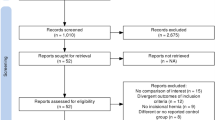Abstract
Introduction and hypothesis
Surgeons use a variety of sutures and knot-tying methods during pelvic reconstructive procedures. We hypothesized that knot-strength integrity will be similar with regards to type of knot, type of suture, and the knot-tying process.
Methods
Using six different suture materials, flat square knots and slip knots were tied robotically and by hand by two surgeons. Knot integrity was evaluated using an Instron 5544 machine. We measured force and elongation at suture failure or knot slippage (whichever came first) as well as force at 3-mm displacement.
Results
Four hundred and thirty-two knots were tie; one unraveled before the analysis, and 431 were tested. Three hundred and ninety-two knots reached or surpassed tensile strength of 30 N, the force at which tissue itself will fail. Knots tied with polyglyconate suture achieved the greatest tensile strength and those with OO-polydioxanone had the lowest. Hand-tied knots, regardless of technique and suture material, had greater tensile strength but greater elongation than robotically tied knots. Slip knots and flat square knots have similar integrity regardless of the tying technique.
Conclusion
Hand-tied knots had greater tensile strength than robotic knots, but the strength to break all knots required supraphysiological conditions. The decision to use a specific type of suture based on strength is not supported by our results, suggesting that surgeons may choose sutures based on other characteristics and personal comfort.


Similar content being viewed by others
References
Katritch V, Olson WK, Pieranski P, Dubochet J, Stasiak A. Properties of ideal composite knots. Nature. 1997;388:148–51.
Lee AC, Fahmy RR, Hanna GB. Objective evidence for optimum knot configuration. World J Surg. 2008;32:2736–41.
Muffly T, McCormick TC, Dean J, Bonham A, Hill RF. An evaluation of knot integrity when tied robotically and conventionally. Am J Obstet Gynecol. 2009;200:e18–20.
Muffly TM, Boyce J, Kieweg SL, Bonham AJ. Tensile strength of a surgeon’s or a square knot. J Surg Educ. 2010;67:222–6.
Schubert DC, Unger JB, Mukherjee D, Perrone JF. Mechanical performance of knots using braided and monofilament absorbable sutures. Am J Obstet Gynecol. 2002;187:1438–40. discussion 1441-2
Jan H, Nobbenhuis M, Ind T. Comparison of knot tying in robotic, laparoscopic, and open surgery: robotic knots as tight as, but more secure than, open knots. J Gynecol Surg. 2013;29:287–91.
Kadirkamanathan SS, Shelton JC, Hepworth CC, Laufer JG, Swain CP. A comparison of the strength of knots tied by hand and at laparoscopy. J Am Coll Surg. 1996;182:46–54.
Dang MC, Thacker JG, Hwang JC, Rodeheaver GT, Melton SM, Edlich RF. Some biomechanical considerations of polytetrafluoroethylene sutures. Arch Surg. 1990;125:647–50.
Zhang QX, Lang JH, Zhu L, Wang NL, Li WT, Kou YH. Clinical anatomic study on ischial spinous fascia fixation. Zhonghua Fu Chan Ke Za Zhi. 2009;44:350–3.
Reynolds DJ. Pfenninger and Fowler’s procedures for primary care: expert consult. In: Pfenninger JL, Fowler GC, editors. Pfenninger and Fowler’s procedures for primary care: expert consult. Philadelphia: Elsevier; 2011. p. 179.
Edlich R,F. Surgical knot tying manual surgical knot tying manual. Norwalk: Covidien; 2008. p. 41.
Tera H, Aberg C. Tensile strengths of twelve types of knot employed in surgery, using different suture materials. Acta Chir Scand. 1976;142:1–7.
Dinsmore RC. Understanding surgical knot security: a proposal to standardize the literature. J Am Coll Surg. 1995;180:689–99.
Culligan PJ, Miklos JR, Murphy M, Goldberg R, Graham C, Moore RD, et al. The tensile strength of uterosacral ligament sutures: a comparison of vaginal and laparoscopic techniques. Obstet Gynecol. 2003;101:500–3.
Shepherd JP, Feola AJ, Abramowitch SD, Moalli PA. Uniaxial biomechanical properties of seven different vaginally implanted meshes for pelvic organ prolapse. Int Urogynecol J. 2012;23:613–20.
Eisenberg D, Vidovszky TJ, Lau J, Guiroy B, Rivas H. Comparison of robotic and laparoendoscopic single-site surgery systems in a suturing and knot tying task. Surg Endosc. 2013;27:3182–6.
Author information
Authors and Affiliations
Corresponding author
Ethics declarations
Conflicts of interest
None.
Rights and permissions
About this article
Cite this article
Dueñas-Garcia, O.F., Sullivan, G.M., Leung, K. et al. Knot integrity using different suture types and different knot-tying techniques for reconstructive pelvic floor procedures. Int Urogynecol J 29, 979–985 (2018). https://doi.org/10.1007/s00192-017-3393-5
Received:
Accepted:
Published:
Issue Date:
DOI: https://doi.org/10.1007/s00192-017-3393-5




